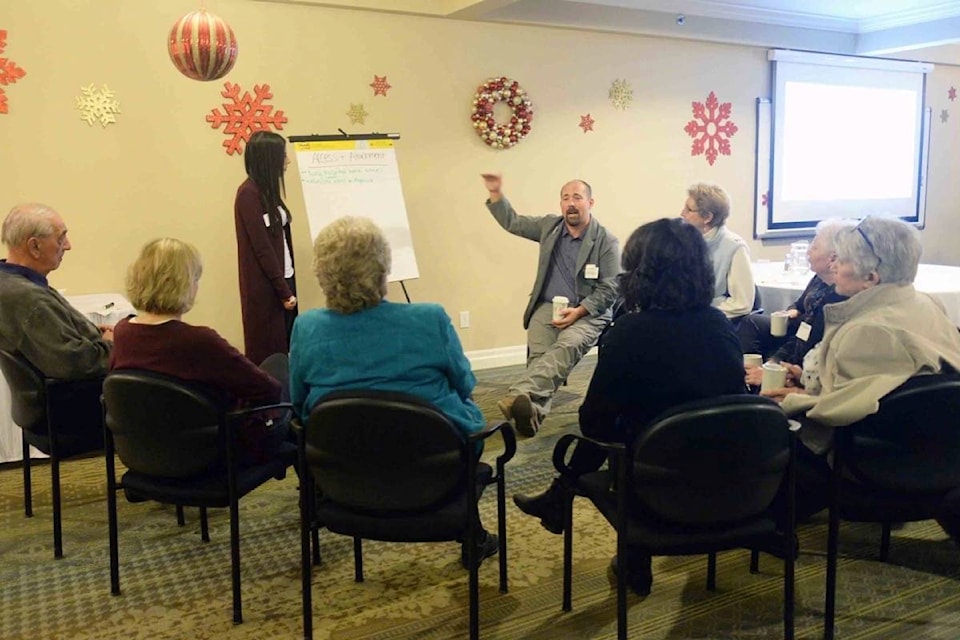What is the future of healthcare in Agassiz, Harrison and Seabird Island?
If you ask Dr. Joshua Greggian, site medical director at Fraser Canyon Hospital and board chair for the Chilliwack Division of Family Practice, its an ‘integrated primary care network.’
It sounds a bit more complicated than it really is, says Greggian, who sums up the health care concept as integrating family practice with other needed services, such as mental health or home care, into a “network or location.”
“Consolidation and collaboration are really critical for everyone’s health care needs,” he said.
Related: Agassiz, Hope to get integrated home health care approach
Typically, a patient visits their doctor, and if they need services outside their physicians’s scope, they might be referred to a specialist.
But that specialist isn’t always easy to get to, and barriers can create an interruption to the patient’s health care.
This newer model of health care won’t eliminate outside referrals, but it will take stock of the community’s needs and work towards consolidating those services into one location.
Greggian says it is about viewing health care “as an entire network as opposed to individual pieces,” and says understanding the community’s health care needs is “imperative to then guide what kind of services should be in the community and how accessible they should be.”
That’s why Greggian facilitated the “Shaping the Future of Health care” community event at the Agassiz Seniors Community (formerly Cheam Village) on Tuesday night. Community members and leaders joined Greggian and a number of physicians, nurse practitioners and health care providers to offer up their voice on exactly how an Integrated Primary Care Network should look in the region.
| At a community meeting Dec. 4, groups discussed a number of topics around the room including 'access and attachment' and 'comprehensiveness.' (Nina Grossman/The Observer) |
“We never want to be prescriptive when designing the health care system,” Greggian told the Observer in a phone conversation. “We want to be responsive. So part of this community event is asking the community, ‘what does health care look like for you?… how can it be responsive to your needs?”
Related: Harrison continues to push for local doctor
Related: Health care crisis creates issues for Agassiz, Harrison residents
It isn’t a new model. Other provinces, like Alberta and Ontario, have been implementing different types of primary care networks for years, and Greggian cites the Northern Health Authority as a B.C. health system that informally, and successfully, integrated some of the needed health care in its region.
Now, Greggian says the province of British Columbia has expressed intention to move toward the integrated model, investing in the process with the understanding that it may look different based on region or community.
In the District of Kent, a major issue for many has simply been trying to find a dependable, long-term family physician, Greggian said. But with more doctors scheduled to come in the new year, he hopes that problem will be solved.
In fact, Greggian said by March, Agassiz should have four physicians and two nurse practitioners – nearly eliminating the possibility that any residents will have to go without a doctor.
“We’ve significantly improved the access [and] the potential for attachment,” he said.
But the new model up for discussion at Tuesday night’s event is asking the community what else it needs.
With 25 per cent of the population over 65-years-old – a percentage expected to grow to 29 per cent by 2027, home care might be a priority. Not to mention the fact that cases of hypertension, COPD and diabetes are higher in Agassiz Harrison than the average rate for Fraser Health.
Cases of depression, suicide and alcohol-related deaths are also above the average. Fraser Health (FH) data from 2015-2016 shows 359 more cases of depression per 10,000 people and the rate of suicide to be .54 times higher than FH numbers.
“We’re trying to really be responsive to the needs of the community by giving…community members the opportunity to speak to what services are necessary,” Greggian said. “Understanding that the sky is not the limit in terms of money or time, but let’s try to reshape or re-align services so that patients of Agassiz and Harrison and surrounding communities can have access to the services they need.”
District of Kent mayor Sylvia Pranger has been advocating for increased health care services throughout much of her career on council. She said she’s excited to see conversations happening.
“It’s time to get…all the health care providers working together. For us it’s really important because we’ve been struggling to keep doctors and now we have someone who is willing to help us coordinate that,” she said. “Everybody can coordinate what’s going on so we get a better, more seamless providing of services.”
Pranger believes the community would benefit hugely from having a diagnostics or x-ray centre so residents wouldn’t have to travel to Chilliwack for imaging services.
For now though, she’s happy to see progress on any level, such as the addition of another physician to the Agassiz Medical Centre.
“It’s wonderful that we’re all trying to work together to one goal – to provide the best care we can for our residents.”
nina.grossman@ahobserver.com
Like us on Facebook and follow us on Twitter
